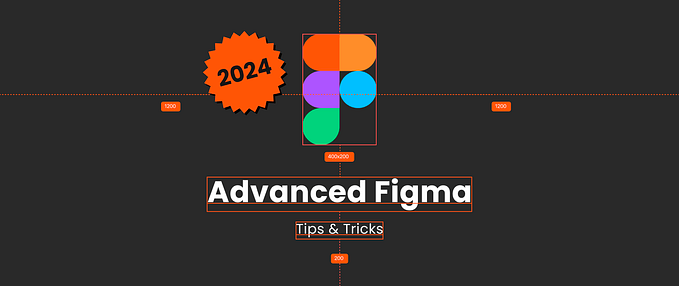How I taught Information Architecture to aspiring UX Designers
After speaking at World IA Day 2016, I was invited by General Assembly to give a 2-hr lecture about Information Architecture to the students of a UX Design Immersive course.

To really nail this I knew I had to figure out how to face a couple of key challenges:
- A 2-hour lecture is not your usual 15-min presentation. You need to structure it in a completely different way to keep it relevant and make it engaging. Bottom line — you can’t just talk for 2 hours.
- Information Architecture is definitely not a very hot topic in the UX/Design world compared to prototyping, design thinking and all that jazz. You need to show the value of doing IA right, and why they (as UX designers) should care.
So how do you do that? Here’s how I did it.
#1. Give a lot of examples.
Information Architecture can be perceived as either very technical, or just overall pretty abstract—especially, in the case of UX students, if compared with other topics such as wireframing, interface design and so on. So as I prepared my lecture, I made sure I’d include at least one example for every concept I was going to explain.

My personal advice, though, is to give a lot of examples, even for the most obvious topics. And good examples. Finding the right ones was the most time-consuming part of the preparation, but proved to be worth it for a number of reasons:
- Examples break the flow of the lecture, making it more dynamic, and establishing a good rhythm
- They also helped debunk the myth that IA = creating categories, and explain how this is just one step of the process
- It’s way easier to show the practical value of IA, and how things can go wrong if you underestimate it
- Helped explaining very abstract concepts: students could translate said concepts into a familiar experience they could relate to
- Following from the above, including both “analog” and “digital” examples helps the audience connect the dots even more and move from a “Yeah I kind of get this” state to a “Oh! Right! Now I get it” reaction.

#2 Draw from everyday experience.
Like I said, “analog examples” proved to be extremely useful. IA is ultimately about organising stuff: we have a lot of examples in real life that we can relate to on a physical as well as conceptual level. That really helps making sure the message sinks in, and illustrates the huge impact IA has on user experience.
The concepts of Ontology, Taxonomy and Choreography are pretty much the basics of Information Architecture (check out this awesome post by Dan Klyn to learn more). You could do a whole lecture just on this topic. I had 10ish minutes. So I first gave a definition of Ontology: in a nutshell, ontology is about establishing a particular meaning.

Taxonomy is the way entities (defined by ontology) are organised to accomplish specific goals. This is the easiest one to understand, as we often think that Information Architecture is just taxonomy (facepalm).
Choreography is about how meaning (ontology) and structure (taxonomy) fit together and interact with each other. And to my experience, this is the trickiest one to understand. This is what I used as an example:

At IKEA, all products are stocked in the warehouse downstairs. But what you see first is the showcase floor, where products and their categories are displayed and organised in the best possible way to provide value and meaning to the customers. So while the warehouse downstairs is an example of taxonomy, this above is a perfect example of choreography.
#3. Engage with exercises.
From experience, the key myths to debunk about IA in the digital space are usually the following:
- It’s just about creating categories
- It doesn’t take much time, it’s a pretty straight-forward process
- The rest of it is very technical
- Yes it affects the user experience but not that much
And while exhaustive explanations and good examples can go a long way debunking these myths, I figured there’s no better way to learn something than with practice. The Lead UX instructor of the course confirmed that exercises are the best way to go, so I prepared three.

1) The quiz.
To make sure the concepts of Ontology, Taxonomy and Choreography had really sunk in, I prepared a quick 5-minute quiz. I showed them different photos and asked them which of the three concepts were displayed. That helped me understand if they “got it” or if it was worth going through the topic again, and helped them switch their mind on.
2) A sorting exercise.
I prepared 5 identical sets of 30 cards. On each card I wrote an item from an Asian restaurant menu. I split the audience into 5 groups. Their task was to sort and categorise the cards — in whatever way made more sense to them.
This is an extremely practical way of showing the audience that the process of creating categories is not always as straightforward as one might think. The groups had to get their head around a lot of issues and make way more decisions than they’d expected.
- Are we going to divide meals into starters, main and desserts?
- Should starters be sub-divided into soups, hot courses and cold courses?
- What’s the best way to display this information to a vegetarian?
- Should we split meat-based courses into chicken, beef, pork?

3) A card sorting exercise.
For the card sorting exercise, 5 groups were given the following scenario. You are building a food delivery app. Users will be able to order take-away food from a list of restaurants. Your set of cards contains different types of cuisine, dietary requirements and restaurants.
- Perform an open card sorting exercise with your group
- Perform a closed card sorting exercise with someone not from your group.
This was definitely the most valuable part of the lecture (students confirmed):
- It helped the audience realise the role that Information Architecture plays in the product development process
- It showed the role of good IA in delivering good user experience in a product that 1) they are extremely familiar with, and 2) they actually might be building for their future employer, one day
- It highlighted the importance and value of involving real users in the process to validate their work—by asking someone from outside the group to help them see if they got it right.

To sum up:
- Give heaps of good examples. It can take a while to find very good ones, but it will be worth it.
- Draw from your work experience if possible. When talking about a specific issue or common mistake, mentioning that you’ve experienced it first-hand and telling the story will give you more credibility.
- Give examples that don’t immediately relate with the digital space. These will help the audience relate to the issue on a more personal/practical level, which will help make sure even the most abstract concepts will sink in.
- Ask questions and engage the audience, get them to finish a sentence for you or to come up with the conclusions instead of just giving the conclusions yourself. It will get them to stay switched on.
- Make it practical, as much as you can. Organise exercises. More than one if possible, at different stages of the lecture, with different complexity levels.
Bottom line: IA is a practical thing. There’s nothing like practice to show its value to the users. So my strategy was: Don’t keep it theoretical. Don’t let the students walk away from your lecture without having applied the concepts you just explained to a concrete situation.
Based on the feedback I got—it worked ;)
Resources
- Dan Klyn’s post Understanding Information Architecture — to learn about Ontology, Taxonomy, Choreography
- I recommended this video by Peter Morville to the students
- I showed this video by Dan Klyn at the beginning of the lecture
- I quoted Abby The IA ‘s definition of Information Architecture
- I recommended Peter Morville’s book “Information Architecture”.










